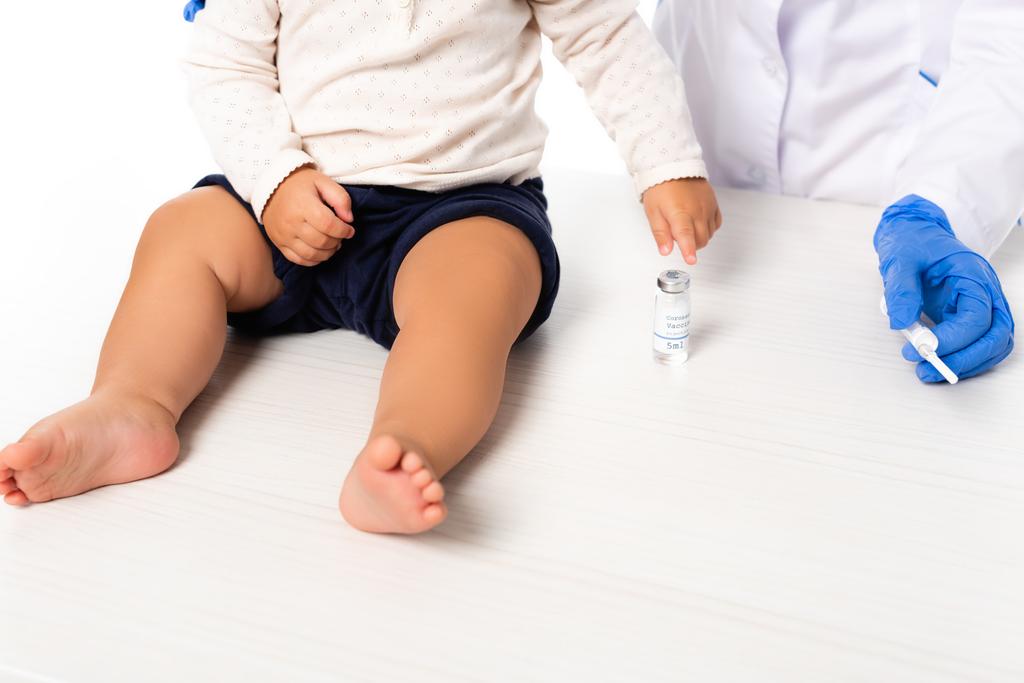A Gentle Guide: Best Practices for Washing Your Baby or Infant
Welcoming a new baby into your life is a joyous occasion, and along with the joy comes the responsibility of caring for your little one, including ensuring proper hygiene. Bathing your baby can be a delightful experience, fostering a sense of connection and well-being. However, for new parents, the prospect of washing a tiny, delicate newborn can be a bit intimidating. In this comprehensive guide, we’ll explore the best way to wash a baby or infant, covering everything from preparation to specific techniques and essential safety precautions.
1. Gathering Supplies: The Importance of Preparation
Before you begin the bathing process, it’s crucial to gather all necessary supplies. Being prepared ensures that you can focus on your baby’s safety and comfort during the bath. Here’s a checklist of items you’ll need:
- Soft Towels and Washcloths: Choose towels with a soft, gentle texture to avoid irritation on your baby’s delicate skin.
- Mild Baby Soap and Shampoo: Opt for specially formulated baby products that are free from harsh chemicals and fragrances.
- Warm Water: Ensure the water temperature is comfortable for your baby, typically around 98.6°F (37°C). You can use a baby bath thermometer to double-check.
- A Clean Diaper and Fresh Clothes: Have these ready for after the bath.
- A Comfortable, Safe Space: Whether you’re using a baby bathtub, a sink, or the family bathtub, make sure the space is clean and safe.
- Soft Brush or Comb: For babies with hair, a soft brush or comb can be useful for gently tending to their hair after the bath.
- Baby Lotion or Oil: Optional, but you might want to have a mild, baby-friendly lotion or oil for moisturizing your baby’s skin post-bath.
2. Choosing the Right Time:
Timing is everything when it comes to bathing your baby. Ideally, you want to pick a time when your baby is alert yet calm, neither too hungry nor too full. Many parents find that bathing their baby in the morning can be an excellent way to start the day, providing a fresh and invigorating experience.
3. Setting the Right Room Temperature:
Ensure that the room where you’re bathing your baby is comfortably warm. Babies lose heat quickly, so it’s essential to maintain a cozy environment. You can use a space heater or simply adjust your thermostat to keep the room warm but not too hot.
4. Safety First: Tips for a Secure Bathing Experience
Safety is the top priority when washing a baby. Follow these guidelines to create a secure bathing experience:
- Never Leave Your Baby Unattended: Babies can slip or move unexpectedly, even in a small amount of water. Always keep a hand on your baby during the bath and never leave them unattended.
- Maintain a Secure Grip: When holding your baby in the water, ensure you have a secure grip, supporting their head and neck with one hand while the other hand supports their body.
- Check the Water Temperature: Before placing your baby in the water, check the temperature to avoid any risk of scalding. You can use a bath thermometer to ensure the water is at an appropriate temperature.
- Secure the Changing Area: If you’re changing your baby’s diaper in the same area, make sure the changing surface is secure and well-padded. Keep a hand on your baby while changing to prevent any accidental rolls or falls.
5. Step-by-Step Bathing Process:
Now that you’re prepared and safety measures are in place, let’s break down the actual bathing process into simple steps:
- Begin with a Sponge Bath for Newborns: In the first weeks, when the umbilical cord stump is still attached, it’s advisable to give your newborn a sponge bath. Gently clean your baby with a soft washcloth, using lukewarm water. Pay special attention to creases and folds, but avoid immersing your baby in water until the stump falls off.
- Use a Baby Bathtub or the Sink: As your baby grows and the umbilical stump falls off, you can transition to a baby bathtub or use the sink. Fill the tub or sink with a few inches of warm water.
- Undress Your Baby Carefully: Ensure the room is warm, undress your baby, and wrap them in a towel, leaving only the body part you’re washing exposed to the air.
- Support the Head and Neck: When placing your baby in the water, always support their head and neck with one hand, using the other hand to guide them into the water. Keep a secure grip throughout the bath.
- Gently Wash with Mild Soap and Water: Use a small amount of mild baby soap or shampoo on a soft washcloth to clean your baby’s body and hair. Start from top to bottom, washing the face, then moving down to the body and finishing with the diaper area.
- Rinse Thoroughly: Make sure to rinse off all soap and shampoo thoroughly. Cup your hand to pour water gently over your baby or use a soft cup for rinsing.
- Dry Your Baby Gently: After the bath, pat your baby dry with a soft towel. Pay extra attention to creases and folds to ensure they are completely dry.
- Moisturize if Necessary: If your baby’s skin tends to be on the drier side, you can apply a mild, baby-friendly lotion or oil to keep the skin moisturized.
- Dress Your Baby in a Fresh Diaper and Clothes: Once your baby is dry and comfortable, dress them in a fresh diaper and clothes.
6. Establishing a Routine:
Babies thrive on routines, and having a consistent bathing routine can be soothing and comforting for both you and your baby. Establish a regular time for baths, and follow a similar sequence each time. This predictability can signal to your baby that it’s time to wind down.
7. Reading Your Baby’s Cues:
Every baby is unique, and some may love bath time, while others might find it a bit overwhelming. Pay attention to your baby’s cues. If they seem content and relaxed, you can extend the bath time gradually. If they appear fussy or upset, consider shortening the bath until they become more accustomed to the experience.
Conclusion:
Bathing your baby is a precious opportunity for bonding and care. With the right preparation, attention to safety, and a gentle approach, you can turn this routine task into a joyful experience for both you and your little one. As you become more confident and attuned to your baby’s preferences, bath time can evolve into a cherished ritual, fostering a sense of security and comfort in your baby’s daily routine. Remember, each baby is different, so feel free to adapt these guidelines to suit your baby’s unique needs and preferences.












